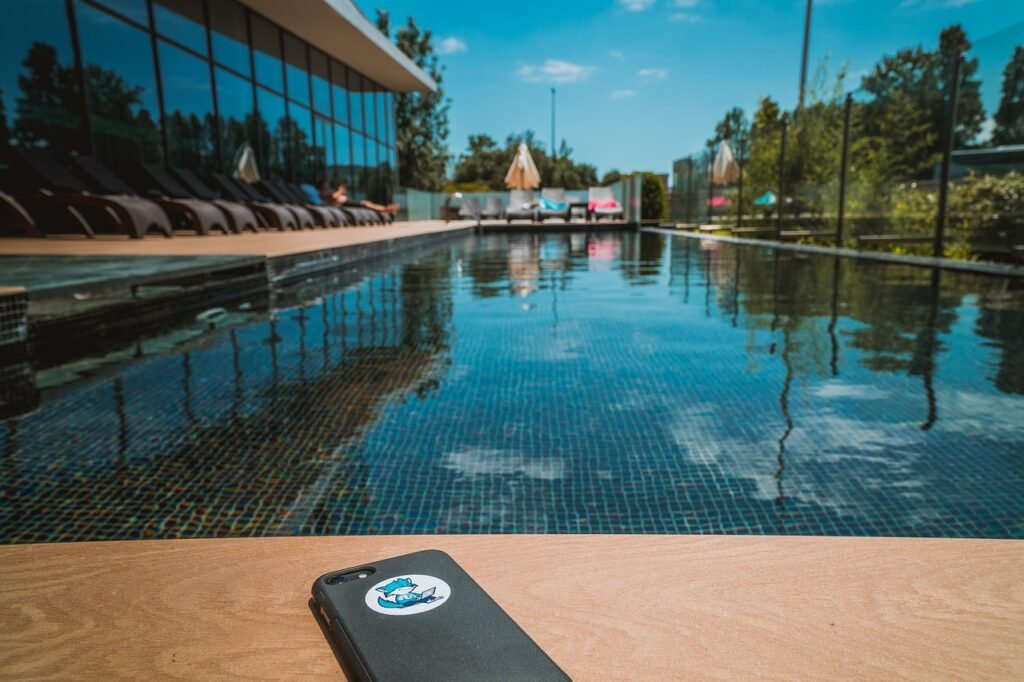Feeling overwhelmed by the constant stream of notifications and information overload? It’s time to consider the benefits of a digital detox. In today’s fast-paced world, taking a break from our digital devices can significantly contribute to our mental relaxation. Disconnecting from technology allows us to reconnect with ourselves, our surroundings, and to focus on the present moment. By stepping away from screens and embracing the joy of being unplugged, we can find a sense of calm and restore our mental well-being.

Benefits of Digital Detox
In today’s fast-paced digital world, taking some time away from technology and disconnecting from the online sphere can offer numerous benefits for your overall well-being. Whether it’s reducing stress and anxiety levels, improving sleep quality, increasing productivity, or enhancing mental clarity, a digital detox can be a great way to rejuvenate your mind, body, and soul.
Reduced Stress and Anxiety Levels
Constant exposure to screens and digital devices can significantly contribute to stress and anxiety. The constant notifications, information overload, and pressures of being constantly connected can leave you feeling overwhelmed and mentally exhausted. By taking a break from technology, you give yourself a much-needed opportunity to disconnect and recharge. This break allows your mind to rest and reduces the levels of cortisol, the stress hormone, in your body.
Improved Sleep Quality
The blue light emitted by screens can disrupt the production of melatonin, a hormone that regulates sleep-wake cycles. Engaging with screens before bed can lead to difficulty falling asleep and can interfere with the quality of your sleep. By implementing a digital detox and reducing screen time before bedtime, you allow your body to naturally wind down and prepare for a restful night’s sleep. Improved sleep quality not only enhances your overall well-being but also positively impacts your cognitive function and productivity during the day.
Increased Productivity
One of the surprising benefits of digital detox is the increase in productivity you may experience. Constant distractions from social media, emails, and notifications can significantly disrupt your focus and hinder your ability to concentrate on tasks at hand. By temporarily disconnecting from the online world, you create a space for deep work, where you can fully engage in your projects without interruptions. This increased focus and productivity can lead to greater efficiency and accomplishment in both personal and professional endeavors.
Enhanced Mental Clarity
With the constant influx of information and stimuli from the digital world, it is easy for our minds to become cluttered and overwhelmed. Digital detox provides an opportunity to declutter your mind and gain mental clarity. By stepping away from screens, you allow yourself to focus on the present moment, be more mindful, and engage in introspection. This break from the digital noise can help you gain perspective, set priorities, and find renewed inspiration and motivation.
Limiting Screen Time
While completely eliminating screens from our lives may not be feasible or desirable, there are various strategies you can employ to limit your screen time and create a healthier balance between your digital and offline life.
Setting Boundaries with Devices
Establishing clear boundaries with your devices can be an effective way to limit screen time. Designate specific times and places where you engage with screens, and outside of those boundaries, strive to maintain a screen-free environment. For example, you could avoid using your phone during meal times, or establish a no-screen rule for the first and last hour of your day.
Creating a Schedule
Creating a schedule for both online and offline activities can help you manage your time more effectively and reduce mindless scrolling. Allocate specific time slots for checking emails, scrolling through social media, and engaging in other online activities. By having a schedule, you can be intentional about your screen time and ensure that it doesn’t dominate your entire day.
Using Digital Well-being Tools
Many smartphones now offer digital well-being tools that can help you track and manage your usage. Set limits on certain apps or implement features that remind you to take breaks. These tools can be handy in encouraging mindful tech usage and enabling you to stay accountable to your screen time goals.

Exploring Offline Activities
Once you have established a digital detox plan and started to limit your screen time, it’s essential to fill that vacant space with offline activities that nourish your mind, body, and soul.
Engaging in Physical Exercise
Physical exercise is not only beneficial for your physical health but also has a significant impact on your mental well-being. Engaging in regular exercise can elevate your mood, reduce stress, and increase energy levels. Whether it’s going for a run, practicing yoga, or engaging in team sports, finding a form of exercise that you enjoy can be a great way to disconnect from screens and boost your overall well-being.
Spending Time in Nature
Nature has a way of soothing the soul and grounding us in the present moment. Make a conscious effort to spend more time in nature by going for walks, hiking, or simply sitting in a park. Take in the sights, sounds, and scents of the natural world around you, and allow yourself to reconnect with the beauty and serenity of the outdoors.
Trying New Hobbies
Digital detox presents an excellent opportunity to explore new hobbies or rediscover old passions. Engage in activities that stimulate your creativity, such as painting, playing a musical instrument, or writing. Trying new hobbies not only provides a break from screens but also fosters personal growth, expands your skillset, and adds richness to your life.
Developing Healthy Habits
In addition to limiting screen time and exploring offline activities, developing healthy habits can further support your digital detox journey and promote overall well-being.
Practicing Mindfulness and Meditation
Mindfulness and meditation are powerful practices that can help calm the mind, reduce stress, and increase self-awareness. Incorporate mindfulness and meditation into your daily routine by setting aside a few minutes each day to be fully present and aware of your thoughts, emotions, and sensations. These practices cultivate a sense of inner calm and resilience, making it easier to navigate the challenges of the digital world.
Establishing Tech-free Zones
Designate specific areas in your home or workplace as tech-free zones. For instance, make your bedroom a sanctuary free from screens, ensuring a peaceful and uninterrupted space for rest and relaxation. Similarly, create tech-free zones during meals or social gatherings to foster meaningful interactions and connection with others.
Socializing in Person
While technology has provided various means of communication, it is essential not to neglect the value of genuine human connection. Make a conscious effort to schedule regular face-to-face interactions with friends, family, and loved ones. Engaging in meaningful conversations and spending quality time with others not only strengthens relationships but also helps combat social isolation and promotes overall well-being.

Reducing Information Overload
Information overload can be overwhelming and contribute to feelings of stress and anxiety. Implementing strategies to reduce information overload can significantly benefit your mental well-being.
Unplugging from News and Social Media
News and social media can be sources of valuable information and connection, but excessive exposure can lead to information overload and negative emotional responses. Consider limiting your consumption by setting specific times throughout the day to catch up on news or setting boundaries on social media use. Unplugging from news and social media for periods of time can provide a much-needed break and reduce the overwhelming influx of information.
Filtering and Managing Notifications
Constant notifications from emails, messages, and social media platforms can be highly distracting and disrupt your focus and productivity. Take control of your notifications by turning off unnecessary alerts and prioritizing only the most essential ones. By filtering and managing notifications, you can minimize distractions and create a calmer digital environment.
Organizing Digital Spaces
Clutter in our physical surroundings can contribute to feelings of stress, and the same applies to our digital spaces. Take some time to declutter and organize your digital devices, files, and apps. Delete unnecessary files, limit the number of apps you have, and create structured folders and systems to help you locate and access what you need efficiently. A well-organized digital space can enhance your productivity, reduce digital overwhelm, and streamline your online experience.
Improving Attention Span and Focus
In a world filled with constant distractions, improving attention span and focus is becoming increasingly challenging. By incorporating strategies focused on enhancing concentration, you can reclaim control over your attention and cultivate a more focused and productive mindset.
Engaging in Deep Work
Deep work refers to the ability to concentrate without distraction on cognitively demanding tasks. By creating an environment that minimizes distractions and setting dedicated periods of uninterrupted work, you can engage in deep work and accomplish more in less time. Consider implementing strategies such as time blocking, setting specific goals, and using productivity techniques like the Pomodoro Technique to increase your ability to focus deeply.
Training the Brain with Cognitive Exercises
Our brain is like a muscle, and just like any other muscle, it can be trained and strengthened. Engaging in cognitive exercises and activities that challenge your mind can help improve your attention span and focus. Puzzles, brain training apps, and reading complex material are examples of activities that can sharpen your cognitive abilities and enhance your ability to concentrate.
Practicing Single-tasking
In a world that glorifies multitasking, practicing single-tasking can be a powerful way to improve attention span and focus. Rather than attempting to juggle multiple tasks simultaneously, focus on one task at a time, dedicating your full attention to it. By focusing on one task, you allow yourself to immerse deeply in the present moment and bring your undivided attention to the task at hand.
Enhancing Relationships
In a digital age where virtual connections and interactions have become the norm, it’s crucial to remember the value of fostering and nurturing relationships in person.
Being Fully Present with Loved Ones
When spending time with loved ones, it’s important to be fully present and engaged in the moment. Put away your devices, avoid distractions, and actively listen and engage with the people you care about. By giving your undivided attention, you demonstrate respect, deepen your connections, and create memories that cannot be replicated through digital means.
Having Meaningful Conversations
Digital communication often lacks the depth and richness of face-to-face conversations. Make an effort to have meaningful, authentic conversations with others. Engage in active listening and empathize with the thoughts and feelings of the person you are speaking to. By fostering genuine connections through meaningful conversations, you build stronger relationships and create a sense of belonging and support.
Building Empathy and Connection
Digital detox can help develop empathy and connection by stepping away from the constant virtual interactions and engaging with others in person. Empathy is nurtured through observing and understanding non-verbal cues, facial expressions, and body language. By actively engaging in face-to-face interactions and practicing empathy, you strengthen your relationships, deepen your understanding of others, and foster a greater sense of community.
Achieving Work-Life Balance
In a world where work and personal lives often intertwine, establishing a digital detox plan can help achieve a healthier work-life balance.
Separating Work and Personal Life
It can be tempting to constantly check emails and work-related notifications, blurring the boundaries between your work and personal life. By establishing clear boundaries and designating specific times for work-related activities, you can create a balance that allows you to fully engage both in your work and personal life. Avoid bringing work into your leisure time and vice versa, ensuring that you have time for relaxation, hobbies, and quality time with loved ones.
Setting Digital Boundaries with Colleagues
In a highly connected work environment, it’s important to set clear digital boundaries with colleagues. Communicate your expectations regarding response times to emails or messages and establish guidelines for after-hours communication. By setting these boundaries, you can prevent work-related stress from encroaching on your personal time and promote a healthier work-life balance.
Creating Downtime
Just as you schedule time for work and other responsibilities, it’s essential to schedule downtime for self-care and relaxation. Incorporate activities that nourish your mind, body, and soul into your schedule, whether it’s taking a bath, reading a book, practicing a hobby, or simply doing nothing. Creating intentional downtime allows you to recharge, reduce stress, and maintain a healthy work-life balance.
Boosting Creativity and Inspiration
Digital detox can have a profound impact on your creativity and inspiration by providing a break from constant stimulation and fostering a mindset conducive to innovation and imagination.
Taking Time for Reflection and Solitude
In the digital world, solitude and quiet contemplation are often overlooked. Take time for introspection, self-reflection, and simply being alone with your thoughts. Disconnecting from screens and spending time in solitude allows your mind to wander, promotes self-discovery, and can lead to creative breakthroughs and fresh perspectives.
Allowing Boredom to Spark Ideas
Boredom is often seen as a negative experience, but in reality, it can be a catalyst for creativity and innovation. By intentionally creating space for boredom and resisting the urge to fill every moment with stimulation, you invite your mind to wander, and in that wandering, new ideas and insights have room to emerge. Embrace moments of boredom and let your mind meander in uncharted territories.
Seeking Inspirational Resources
While the digital realm provides a vast array of resources and inspiration, it’s important not to rely solely on online sources. Explore offline avenues for inspiration, such as visiting art galleries, attending live performances, or reading books by different authors. These offline experiences can offer a fresh perspective, expose you to new ideas, and ignite your creativity in ways that digital resources may not.
Improving Overall Well-being
Ultimately, a digital detox contributes to improving your overall well-being by addressing both the physical and emotional aspects of your health.
Reducing Eye Strain and Physical Discomfort
Excessive screen time can lead to eye strain, headaches, and physical discomfort. By taking breaks from screens, practicing proper ergonomics, and engaging in activities that promote physical well-being, you can reduce the strain on your eyes and mitigate the physical discomfort associated with prolonged screen use. Remember to take frequent breaks, adjust your screen settings to reduce eye strain, and prioritize your physical health.
Fostering Emotional Resilience
Engaging in a digital detox can help foster emotional resilience by allowing yourself the space to process emotions without constant distractions. Instead of using screens as a means of escape or avoidance, confront and process your emotions in a healthy and constructive manner. Practice self-care, seek support from loved ones, and engage in activities that uplift your spirit.
Promoting Self-care and Self-reflection
Digital detox offers an opportunity for self-care and self-reflection. Use this time to prioritize your needs, engage in activities that bring you joy and relaxation, and cultivate a deeper understanding of yourself. Regularly assess your well-being, identify areas that need attention, and make self-care a priority in your life. By promoting self-care and self-reflection, you can cultivate a healthier and more fulfilling life.
In conclusion, establishing a digital detox can bring about numerous benefits for your mental relaxation and overall well-being. By reducing stress and anxiety levels, improving sleep quality, increasing productivity, enhancing mental clarity, limiting screen time, exploring offline activities, developing healthy habits, reducing information overload, improving attention span and focus, enhancing relationships, achieving a work-life balance, boosting creativity and inspiration, and improving overall well-being, you can create a healthier relationship with technology and find a greater sense of balance and fulfillment in your digital and offline life. So, why not take the first step and embark on a digital detox journey today? Your mind and body will thank you for it.
